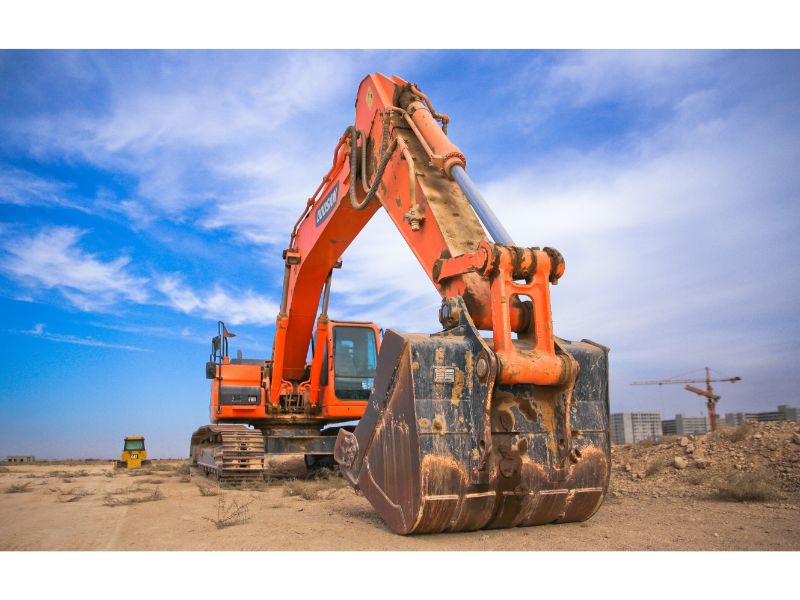Owner Builder Estimating
Owner Builder Estimating

Owner Builder – New homes
Complete new home estimates, full material and labour pricing. Allowing you to easily track your build.

Owner Builder – Renovations
Undertaking a renovation? we can help reduce your costs with our detailed reports.

Owner Builder – Development
Looking to undertake a development? We provide everything from feasibility studies through to detailed estimates.
How much will my home cost to build?
Owner builder estimating – Using our services, you will be provided with a clear price of your project, removing any unknowns with costs.
Our estimate and report can be used as your roadmap to building within your budget. You should not start without it (the bank will want it).
What Is the purpose of Construction Estimates?. Regardless of whether it’s a house, renovation, commercial or industrial development, building and construction estimates are utilized to allow the client a base lie cost with an in-depth analysis of expenditures required to complete the project. They are additionally used to give customers an extended gauge of absolute expenses attributed with the proposed development project within reach.
When building there are extraneous costs that run past the extent of trades and materials expected to finish the work. Our construction estimators are equipped for finishing exact estimates by investigating all variables. Since labour, materials and overheads sway the expense of a development project, it is critical to assemble itemized estimating reports. Such factors may incorporate materials, work, areas, project span, construction regulations, labour, and even soil conditions at the site of a task. For example, customers may disregard the expense of land obtaining for a development project, or may not know about the job severe climate can play all through the length of a venture. In areas that experience extreme environments, development projects frequently experience cost-increases for site works and structural elements. As you can see the Purpose Of Construction Estimates is a critical element.
Moreover, there are different elements that our estimators will think about, including the accessibility of gas, power, water and sewer, surface geography, waste, and the particular materials needed to finish the task. For instance if you are constructing an eco-friendly (Green building) you may use green materials that are more expensive than a standard undertaking however the operating expenses may be decreased.
Construction estimating is the most important preliminary process in any construction project. Therefore, construction cost estimation has the lion’s share of the research effort in construction management. Your estimate is the key to success.
Construction estimating is the most important preliminary process in any construction project. In the construction industry, cost estimation is the process of predicting the costs required to perform the work within the scope of the project . Accurate cost estimation is crucial to ensure the successful completion of a construction project.
As we’ve investigated, with regards to any development project, getting a precise construction estimate is a priceless support of your project. Regardless of whether it’s a residential, commercial or industrial development the construction estimate will indicate the viability and profitability of the works.
Ultimately, using our estimating services will allow a clear understanding of the requirements for your project. By utilizing our expert estimators, you are able to investigate and quickly assess the project costs, time frame and labour requirements.
Owner builder help.
Do you need help sequencing the build process? we can link our estimate to an easy to follow schedule allowing you to easily track trades and suppliers.
Typical Building Sequence
Arrange with your electrician a temporary supply of electricity. Also organise with your plumber a water supply for the duration of the job.
Council regulations require that a site toilet be provided and where necessary footpath crossings, which will be installed by council.
Use our owner builder estimating services to help with your project.
ARRANGE SUB-CONTRACTORS
The following sub-contractors should be contacted.
- Excavator
- Electrician
- Plumber & Drainer
- Gasfitter
- Concreter
- Carpenter
- Bricklayer
- Water proofer
- Plasterer (internal linings)
- Roofer
- Tiler (wall & floor)
- Floor sander
- Painter
When contacting the sub -contractors it is important to remember that they may have several jobs on at once and, with weather interference, it is wise to be prepared for flexibility in your schedule.
Our owner builder cost estimator can schedule all your work for you
The suppliers you will need to arrange for materials and approximate delivery dates are:
- Sand, gravel &filling
- Bricks
- Hardware
- Concrete
- Timber
- Roofing
- Windows, doors and other joinery
- Tilt and Roller Doors
- Tilt and Roller Doors
- Tilt and Roller Doors
- Tilt and Roller Doors
- Tilt and Roller Doors
It is vitally important that you liaise with your sub-contractors and suppliers with regard to timing of deliveries. You must ensure that materials are delivered when your subbie is ready to do a particular job. It isn’t much good to have your Concreter arrive and not have concrete available. You will find that some sub-contractors, such as electricians, will wish to retain responsibility for supply of their own materials. This situation will vary from trade to trade so be aware of who is supplying what, and when payment is required.
Contact us for more help with your owner builder estimating and cost requirements.
Use our owner builder estimating services to help with your project.
Prepare the site for building by removing all vegetation that may inhibit building. It may also be necessary to employ an earthmover to level the block. Information on levels will be available from your surveyor.
SET OUT
Have your surveyor organise the set out for you.
PLUMBER – Pipes
The plumber will be needed to install all the pipes which will be under the flooring of the house.
PLUMBER – Drains
This is an important task undertaken by your plumber. Liaise with him as to when drains should be excavated, laid and backfilled. He may wish to do this after the floor brickwork or at some other stage.
EXCAVATION OF FOOTINGS
Many owner-builders think they will save money by doing their own excavations, but this is most unwise. It is not economical and extremely hard work to excavate firm subsoils by hand. Footings are usually excavated using a backhoe and it is important you employ a specialist excavating company. Also, footings and floor slabs must be designed in accordance with Australian Standard 2870 and structural details may be required by the council. It may be necessary to approach a consulting engineer in this regard.
Don’t leave excavations open for longer than necessary. Rain can wash in soil and cause cave-ins, creating additional work and eventually more concrete. Allow the Concreter to organise his own materials and supplies. Keep dockets and ask for concrete test results. Footings and/or piers should be poured at this time. However, piers often need to be constructed separately to footings. Check with a structural engineer. Clean and tidy the site before the bricklayer starts.
Our expert team can help from the start of the process through to finish.
Find out how much a house costs to build for an owner builder today.
Use our owner builder estimating services to help with your project.
BRICK BASE
Sub-floor brickwork, dwarf walls & piers
The footings should be allowed to cure for a minimum of seven days before continuing construction. During this time, bricks for the base and sand supplies should be delivered. Make sure that set out pegs haven’t been disturbed before further work begins. Building regulations call for a minimum of 230mm clearance below the lowest sub-floor member. Now is the time, before the bricklayer begins, to select the type of jointing you will be using between the bricks, e.g. raked, ironed, flushing
TERMITE TREATMENT
Contact your local council for their individual requirements prior to proceeding with construction works.
There are several ways to protect structural members subject to attack by subterranean termites:
- Physical barriers;
- Soil treatment
Physical barriers for timber floor construction are mandatory and take the form of ant caps to piers and continuous ant capping to brick walling in the sub floor area. Soil treatment under slabs can be either by chemical and non-chemical means.
CONCRETE SLAB
Unless the site is flat and sandy it may be necessary to excavate. Again, the set out for the excavation should be done by a surveyor, setting the appropriate levels.
It is important that the excavator abides by the levels – failure to do so will cost you time and
money. Before the excavator leaves the site, ensure that there is a minimum of 50mm of packing sand available.
Often however, compacted base material is specified to be 150mm thick. The degree of accuracy of excavation will depend on the type of soil encountered. It may be prudent to cut and fill where required, moving soil from the deeper areas of the excavation to the shallower areas. If you find this necessary be sure to use similar soil types for fill. You may be required to have piers down into soil of a similar type to the excavated areas, right throughout the filled areas.
It could also mean that part of the slab will be suspended, and you may he required to submit engineers plans to council. All vegetation must be removed from the construction area, with the excavation allowing for clearance around the building for subsequent paving and adequate surface drainage. Ensure that the site is left tidy, with all unwanted soil removed. The set out for the slab should be completed by your surveyor.
FORMWORK OR BOXING
This should be undertaken by your Concreter. Unless you are an expert, don’t attempt to carry out this important part of the construction.
PLUMBER
At this stage the plumber can provide waste pipes for the later installation of fittings. Satisfy yourself that all appropriate floor wastes have been included before further progress, and that these pipes have been inspected by the necessary authority before
concrete is poured. Failure to do this could result in expensive inconvenience. When the plumber has completed work on the internal waste pipes and fill has been placed and levelled, call in the pest controller to treat the ground before the membrane is laid.
Contact the county council office with regard to electricity supply and a telephone company for the provision of supply pipes in the slab. Consider the installation of gas services before pouring the concrete.
VAPOUR BARRIER & REINFORCEMENT
These steps follow in sequence. The vapour barrier consists of polythene sheets laid over the entire slab area. All the joints should be lapped by not less than 200mm to ensure a continuous membrane beneath the slab area. Any penetrations such as plumbers’ waste pipes or heating ducts should be secured through the membrane and all joints must be sealed.
The reinforcement is now placed as specified. The use of a specialist concreter will ensure the reinforcing will be in the correct place or position when the concrete is poured.
It is vitally important that the membrane is not damaged during reinforcing – if damage
occurs make sure it is repaired before the pouring of the concrete.
After the steel has been placed and the job is ready to pour, a council inspection must be carried out before work proceeds.
POURING OF CONCRETE
This is the specialised field of the Concreter. Ensure that once the pour is started it is completed as soon as possible. The slab will be weakened if fresh concrete is placed against partly set concrete.
Make sure that the membrane is not broken during the pour and that neither reinforcing nor plumbers’ waste pipes are disturbed or moved.
The slab should not be allowed to dry too quickly as this may produce cracks in the surface and in extreme cases, structural faults.
FLOOR FRAME
Your carpenter will place the bearers first, then the floor joists. Once the bearers and joists are fixed the carpenter should ensure that the floor frame is flat. If this is not checked at this stage, irregularities could occur later which could be difficult to rectify.
Before the flooring is fixed, check to see that the bearers are resting on the piers and there are no gaps
between. Furthermore, the joists should be fixed tight to the bearers. This will save you having to correct squeaks at a later stage.
A council inspection is required prior to the placement of the floor.
Sheet flooring (particle board) is the most widely used floor-type and is most satisfactory if the floor is to be carpeted. It is imperative that both be fixed to the manufacturer’s specifications.
Use our owner builder estimating services to help with your project.
WALL FRAME
The Owner-builder would be advised to utilise prefabricated wall frames. Time is vitally important and prefabricated wall frames will simplify the job. Wall frames are to be manufactured or constructed in accordance with Australian Standard 1684 unless otherwise specified. Their use reduces cutting and assembly costs on the job and theft of materials from the site is reduced.
Typically in Western Australia the use of brick construction has been seen as the normal, but there are alternatives!
WALLS – Bricklayer
Brick walls are constructed in two stages. The first, dwarf walls are constructed after the footings have been completed. The second stage is after the roofing is completed and the meter box is in place.
Contact us today for more information.
Use our owner builder estimating services to help with your project.
Use our owner builder estimating services to help with your project.
